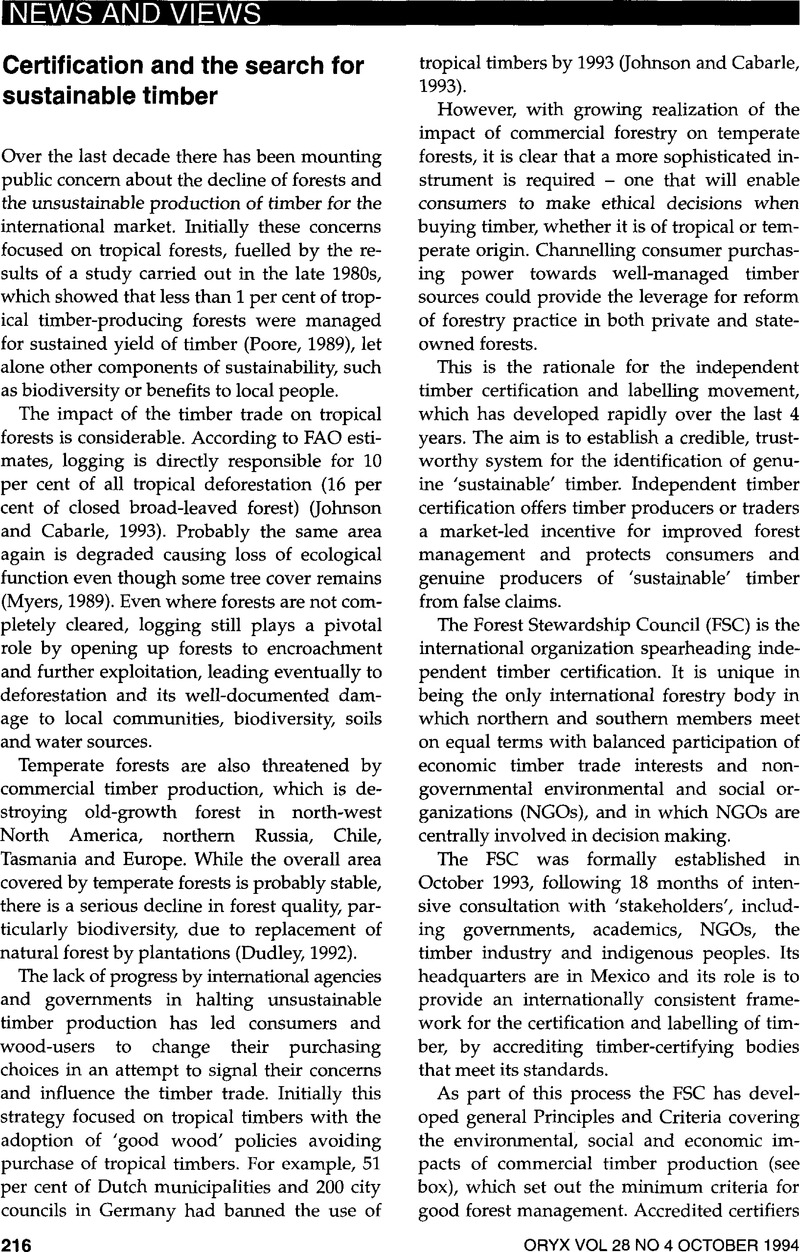No CrossRef data available.
Article contents
News and Views
Published online by Cambridge University Press: 24 April 2009
Abstract
An abstract is not available for this content so a preview has been provided. As you have access to this content, a full PDF is available via the ‘Save PDF’ action button.

- Type
- News and Views
- Information
- Copyright
- Copyright © Fauna and Flora International 1994
References
Barnett, T. 1990. The Barnett Report: A Summary of the Report of the Commission of Inquiry into Aspects of the Timber Industry in Papua New Guinea. Asia-Pacific Action Group, Hobart, 1990.Google Scholar
Callister, D. J. 1992. Illegal Tropical Timber Trade: Asia-Pacific. TRAFFIC International, Cambridge, UK.Google Scholar
Colchester, M. 1993. Slave and enclave: towards a political ecology of equatorial Africa. The Ecologist, 23, 166–173.Google Scholar
Johnson, N. and Cabarle, B. 1993. Surviving the Cut: Natural Forest Management in the Humid Tropics. World Resources Institute, Washington DC.Google Scholar
Monbiot, G. 1991. Amazon Watershed: The New Environmental Investigation. Michael Joseph, London.Google Scholar
Myers, N. 1989. Deforestation Rates in Tropical Forests and their Climatic Implications. Friends of the Earth, London.Google Scholar
Poore, D. 1989. No Timber without Trees: Sustainability in the Tropical Forest. Earthscan Publications Ltd, London.Google Scholar
Parker, I.S.C. and Bradley, Martin E. 1982. How many elephants are killed for the ivory trade? Oryx, 16, 235–239.Google Scholar
Parker, I.S.C. and Bradley, Martin E. 1983. Further insight into the international ivory trade. Oryx, 17, 194–200.Google Scholar


